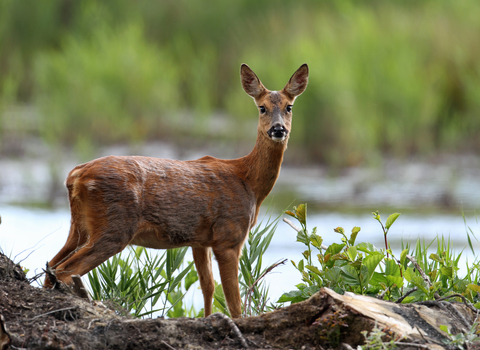The Isle of Wight and its habitats have evolved without a wild breeding population of deer for at least 500 years. This has led to the development of a unique and diverse range of flora and fauna, due to the Island’s specific ecological conditions. For example, the Island’s woodlands have a particularly rich native mammal fauna, not found in any other woodland in the UK, including red squirrel, hazel dormouse, bechstein’s bat and barbastelle bat. These species have evolved over hundreds of years in the absence of grey squirrels and without the grazing pressure from deer.
The Trust does not support releasing deer on the Isle of Wight. Whilst there is enthusiasm for establishing a wild deer population on the Isle of Wight from one or two organisations, the Trust along with the Isle of Wight Biodiversity Partnership and the statutory nature conservation bodies, believes that establishing a breeding population of deer on the Isle of Wight is not necessary for the ecological health of the Island’s habitats and could be detrimental.
Introducing deer without appropriate management could threaten this fragile equilibrium, resulting in irreparable damage to the Island’s natural habitats. While some deer grazing can be beneficial to a range of habitats and other wildlife, the delicate balance of the Island’s ecosystem could be significantly disrupted by the introduction of this free-roaming species, whose populations can quickly spiral out of control, leading to overgrazing, habitat destruction, and competition with native wildlife for resources. The absence of natural predators for deer on the Isle of Wight would further exacerbate population growth, leading to increased challenges in maintaining the balance between wildlife and the environment. Deer management is a significant challenge across the UK for conservation managers and the Island is in a unique position to avoid these issues.
The Trust’s position is therefore to support the goal of maintaining the Isle of Wight’s woodlands and wider landscape as an environment free from a breeding population of wild deer of any species.
The decision to introduce any species to an ecosystem should be based on a thorough understanding of its potential impacts and the ability to manage those impacts effectively. In the case of the Isle of Wight, the introduction of deer presents considerable risks to the delicate Island environment.

